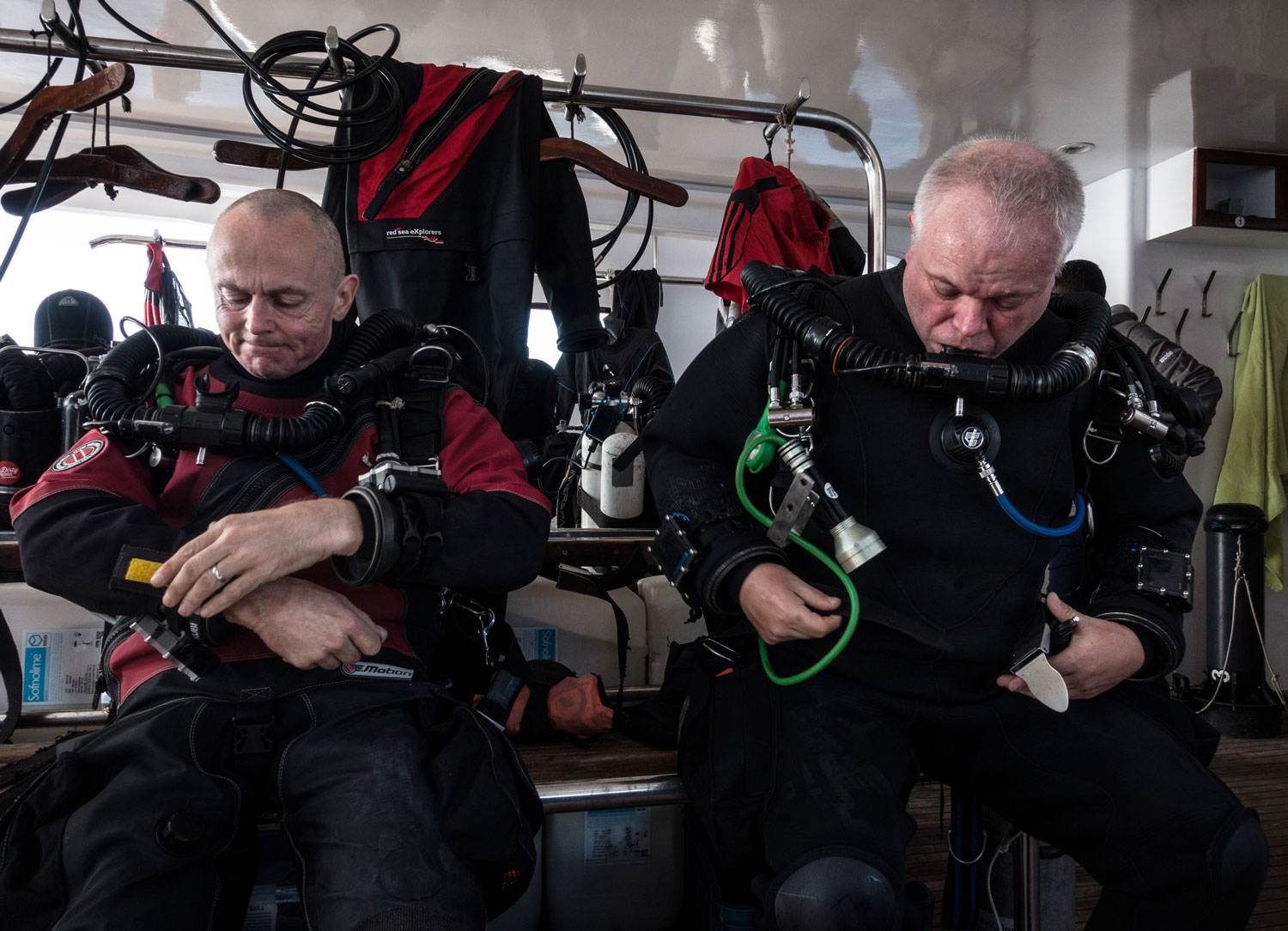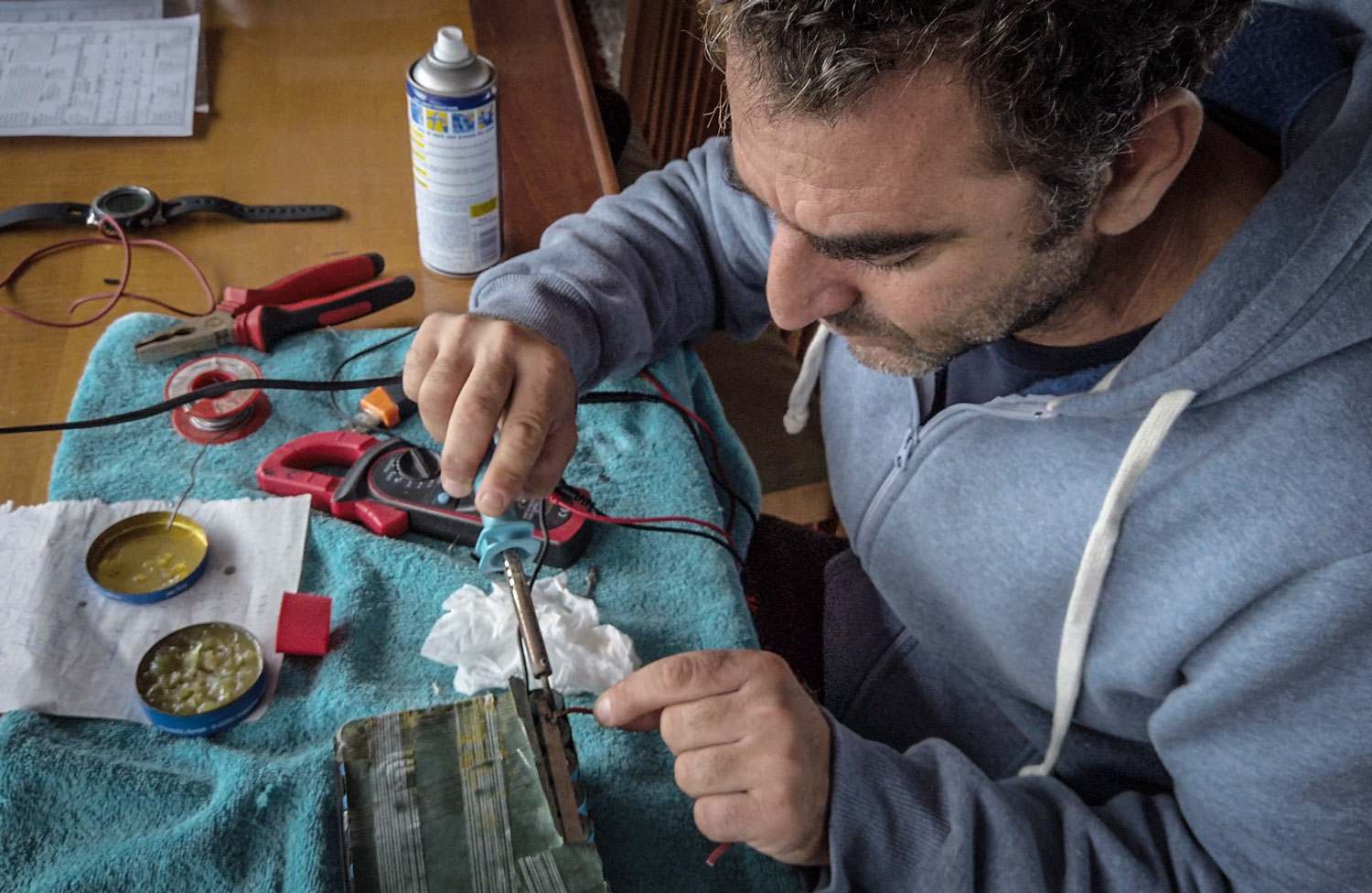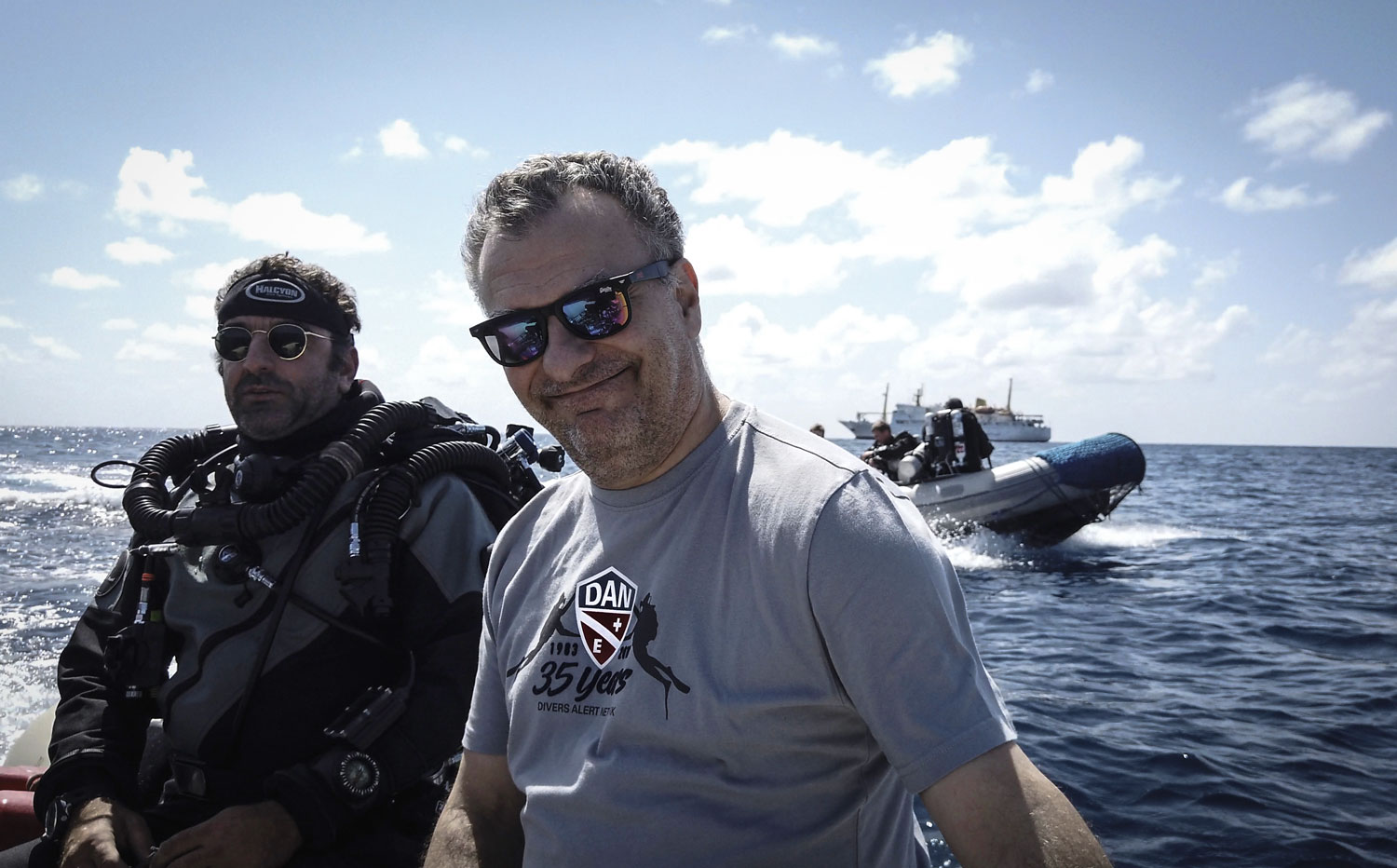Dive Travels
APOCALIPTRIP: What Some of The Divers Had To Say
APOCALIPTRIP members: Søren Bøwadt, Matijn Buwalda, Faisal Khalaf, Olga Martinelli, Andreas Bøwadt, Peter Germonpré, Costantino Balestra, Patrick Valkenborghs, Alan Kilcline, Christiaan Hedges, Jan Petersen, Thomas Solberg, Lars Martin Thorstein, Pavel Okishev, Steffen G .Scholtz
Ten experienced and enthusiastic divers participated and kindly agreed to be monitored by DAN Europe during the 10-day diving safari aboard the MV Nouran, organized by JJ-CCR and Red Sea Explorer teams.
Here’s what some of the divers had to say
FB: “Over the years I have played around with a variety of decompression profiles and strategies. Mainly it has been a self-assessment of what feels good and what works. Sometimes in emergencies, it has even been what gets me out of the water fastest to avoid hypothermia, to help other divers, or to get to a cold beer as fast as possible. When Soren started putting together this project which involved DAN bubble research onboard our vessels, I was very keen to partake. It was a great pleasure and learning experience to see the dedication of the DAN team. The lectures in collaboration with the field science being conducted on the boat, proved to me that how I felt about different profiles and where my limits are, had nothing to do with how the physiology actually works. The science gave us a completely different explanation, which in itself was not conclusive, and it was not the same for all divers.”

SB: “I have been interested in decompression and how to optimize it for deep technical diving for many years. As a chemist with molecular biology and physics as a background, I have always believed quite strongly in a Neo-Haldanian type approach. However, I recognized that decompression behavior is not that simple and that different people have different physiology, which significantly can influence the decompression. That’s why it was important to me to be part of this endeavor, and to add knowledge, particularly about the results of decompression after several consecutive deep rebreather dives, and how our physiology responded to these repeated dives. It is really rewarding to try to put the whole picture together, realizing that there are a lot of things that we think we know that are only partially correct, or even wrong. The combination of scientific lectures, serious diving, great collaboration and having fun at the same time was a wonderful experience. I very much appreciate the collaboration between DAN and the divers who were fully immersed and having fun, while learning and sharing their personal knowledge and experience. It was an extremely efficient approach.“

PV: “Being invited on the JJ-CCR expedition, by Søren Bøwadt to dive the deep wrecks in the red sea with very experienced divers was an real opportunity to share experiences, different techniques and to network with very capable divers, which everyone appreciated. It was also a privilege to take part in the decompression research conducted by DAN after these challenging technical dives and I was not prepared to let it pass by.
The researcher onsite was no one less than Prof. Costantino Balestra, who brought some of the newest available bubble detecting tools. The presence of bubbles after the dives was obvious, but it was Costantino that put them into prospective in terms of their possible cause of DCI or of decompression stress. It was an eye opener for many team members on this ambitious expedition. To be able to participate in the trip and dive as part of a science project like this, you need the appropriate logistics. One needs a boat that has the space, capability and the expertise to support projects of this size and complexity. All of these logistics were provided by the Red Sea Explorers, led by Faisal Khalaf, who did not blink an eye in addressing the challenges. In addition, the outstanding crew of the MV Nouran did everything possible to make it successful trip. Overall it was an exceptional expedition that was appreciated by all of the team members who returned home with new experiences, more knowledge of decompression, a better understanding of the complex theories involved, which will hopefully add to everyone’s dive safety.”
CH: “Just a short message to say thanks to Soren and Faisal for arranging such a great trip. Hopefully everyone has either arrived home or at least has a plan to get home in the coming days. Even though the trip was cut short by Covid-19, which is just a government cover-up for the zombie apocalypse, I had a great time aboard MV Nouran with a great group of people and did some truly memorable diving. I hope this becomes an annual event. Where do I sign up? “

PO: “My experience diving closed-circuit rebreathers (CCR) began in 2000 and now encompasses depth ranges down to 120 msw. I welcomed the opportunity to participate in this project. Due to some technical issues, I was not able to make deep dives during this week. Instead I limited myself to maximum depth of 50 msw on CCR using a rich 12/65 helium mix in my diluent gas and average bottom PPO2 of 1.1 ATA during all dives including some recreational dives within the no-decompression limits. After each dive we did ultrasound checks and the data after each check was almost the same. I didn’t see many changes in venous gas emboli (VGE) from dive to dive, even if when I used different profiles and gradient factors. I was conservative with my ascent profiles and the deco strategy that I have developed for myself based on my post-dive feelings and experience in tech and CCR diving. After a result of the lectures during the trip, I learned things that I would like to try on future dives. Based on my personal feeling and post-dive condition, I could say that my condition after dives with higher helium-rich mixes was better than my condition after the same profiles with open circuit nitrox.”
CB: It was a privilege for me and a pleasure to spend this amazing time with such a dedicated and pleasant group of divers. We got to know each other and it felt like everyone returned home with a personal take-home message to increase their own diving safety when conducting deep dives. It was very nice to see how eager the majority of participants were for explanations to their questions—their thirst for knowledge was even greater that their official thirst! Thank you all!

SGS: At some point decompression becomes very personal. Over the years, particularly when your dives are more advanced you develop your own profiles and habits, certainly supported by decompression theory. But usually these come down to: “I know this works for me.” But it is always a pleasure discussing strategies and ideas with friends and experts, sharing experiences and giving new methodologies a go. On this trip, Faisal encouraged me to try massaging myself before the dive and during the deco stage of the dive, in order to improve my decompression. My thought at the time was: this might work for him but for me. I couldn’t see any benefit. As soon as deco profiles started getting aggressive, I came to the conclusion that it would be a disadvantage to me. Nevertheless I thank Faisal, my perfect dive buddy, for sharing this idea with me. All in all, it was a great diving trip. I made a number of good friends. I want to give a big thank you to Søren Bøwadt for putting it all together and for Faisal Khalaf together with Red Sea Explores for the great hospitality. I am looking forward to next time.


